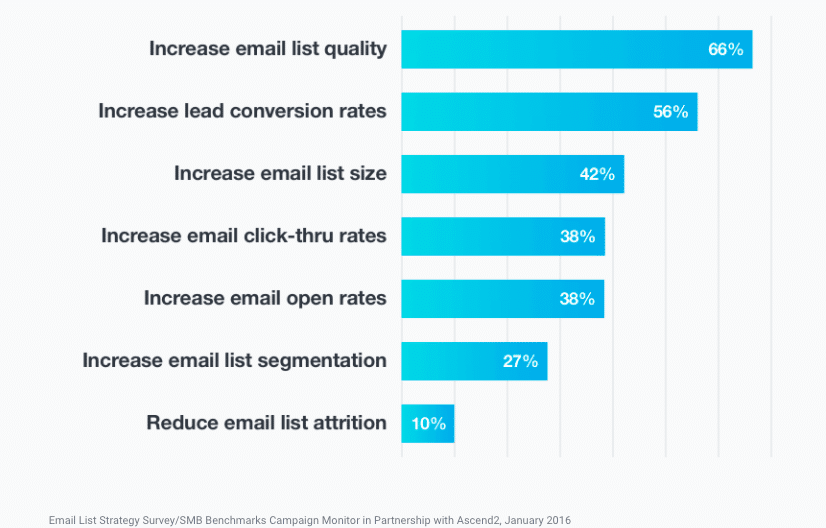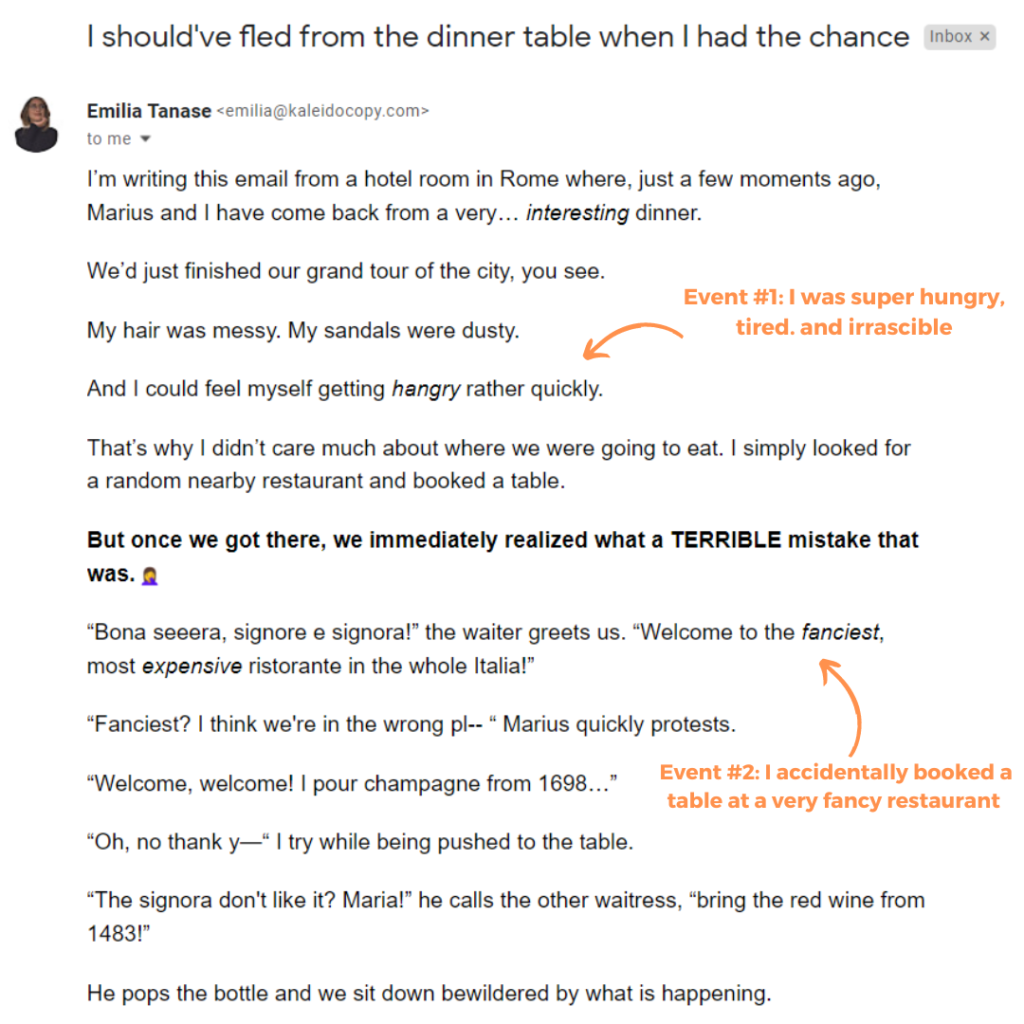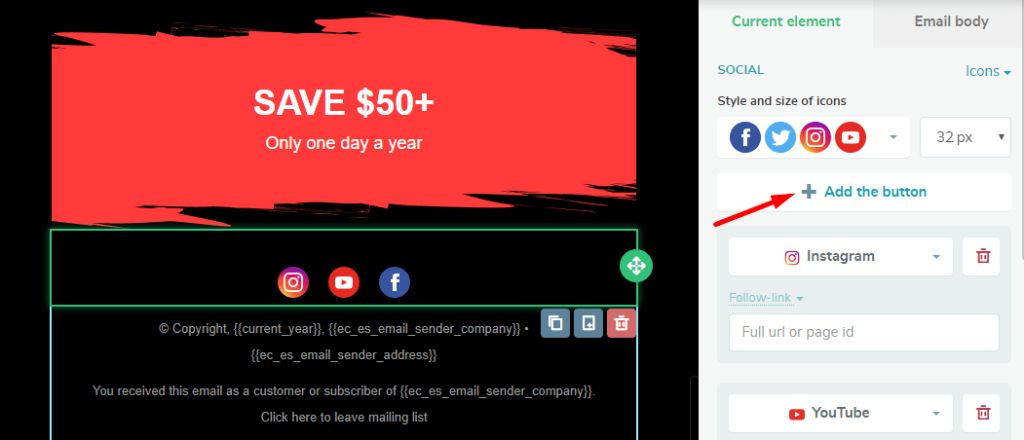13 Email Marketing Tips for Small Businesses in 2024

Email marketing, a tried-and-true strategy for businesses of all sizes, continues to shine as a beacon of high ROI, averaging an astounding $42 return for every $1 invested.
In this article, we’ll delve into the latest and most effective strategies to help small businesses harness the power of email marketing in the current year.
From crafting compelling subject lines to leveraging automation and personalization, we’ll share invaluable insights to help you maximize your email marketing efforts and drive growth for your small business.
Stay tuned for the expert guidance you need to make your email campaigns a resounding success in 2024.
13 Email Marketing Tips for Small Businesses
In the dynamic landscape of email marketing, staying ahead of the curve is essential for small businesses aiming to maximize their impact.
We’ve curated 13 invaluable email marketing tips tailored to the needs of small businesses in 2024.
These insights encompass everything from crafting attention-grabbing subject lines to harnessing the potential of automation and personalization.
By implementing these tips, you’ll be well-equipped to supercharge your email marketing campaigns and drive success for your small business.
Let’s get into it!
1. Build a Quality Email List
While the importance of a high-quality email list may seem obvious, it’s a fundamental aspect of email marketing that is often underestimated or overlooked.
In the digital age, where subscribers are inundated with countless emails daily, having a quality list is paramount to stand out and achieve your email marketing objectives.

A quality email list is not just about quantity but authenticity, engagement, and relevance. When your list comprises subscribers who genuinely want to hear from you, you’re more likely to achieve higher open rates, click-through rates, and, ultimately, conversion rates.
Moreover, sending emails to recipients who haven’t explicitly opted in can lead to deliverability issues, potentially harming your sender’s reputation. So, your list’s quality directly impacts your email campaigns’ success.
How to Build a Quality Email List:
- Obtain Explicit Permission: Always begin by acquiring explicit permission from individuals before adding them to your email list. This should be a foundational principle of your email marketing strategy. Ensure that you’re only sending emails to individuals who have willingly subscribed or opted in to receive your content. Permission-based marketing not only keeps you compliant with email marketing regulations but also ensures that your audience is genuinely interested in what you have to offer.
- Create Engaging Sign-Up Forms: Design sign-up forms that are not only visually appealing but also communicate the value of subscribing to your emails. When potential subscribers understand the benefits they’ll receive, such as exclusive discounts, valuable insights, or useful resources, they’re more likely to opt in. Consider using persuasive copy and eye-catching design to entice visitors to subscribe.
- Implement a Double Opt-In Process: A double opt-in, or confirmation, process adds an extra layer of validation. After someone subscribes, they receive an email asking them to confirm their subscription by clicking a link. This step ensures that the email addresses on your list are valid and reduces the chances of fake or mistyped addresses.
- Segment Your List: As your list grows, don’t treat all subscribers the same. Segment your list based on demographics, interests, or behavior. This allows you to send more targeted and relevant content to different segments. When subscribers receive content that resonates with their specific needs and preferences, they’re more likely to engage with your emails.
- Regularly Clean Your List: Over time, email addresses may become inactive, or recipients might change their email addresses. Periodically clean your list by removing invalid or unengaged subscribers. This not only maintains list quality but also saves on email marketing costs and improves your email deliverability.
Building and maintaining a high-quality email list is an ongoing process that lays the foundation for successful email marketing.
In 2024, the focus on quality is paramount for small businesses looking to connect with a genuinely interested audience and drive email marketing success.
2. Personalize Your Emails
In email marketing, personalization is not merely a buzzword; it’s a powerful strategy that can make a substantial difference in engagement and conversion rates.
Personalization transforms generic messages into tailored, individualized experiences that resonate with your subscribers when done effectively.
Here’s how to harness the potential of email personalization:
Using Personal Words: One of the simplest yet highly effective ways to personalize your emails is by using personal words like ‘you’ and ‘your.’ By addressing your subscribers directly, you create a one-on-one connection that makes them feel valued and recognized.
Instead of a generic greeting, such as “Dear Customer,” opt for a more personal approach, like “Hi, [Subscriber’s Name].” Personalized greetings set a friendly and engaging tone for your emails.
Here’s an example of how this small change can impact the message of the email:
- Personalized Email: “Hi [Subscriber’s Name], we’ve selected exclusive offers just for you!”
- Non-Personalized Email: “Check out our latest offers.”
Segmentation and Targeting: Segmentation is another vital aspect of personalization. Divide your email list into segments based on various criteria, such as demographics, purchase history, or location. This allows you to send targeted messages to different groups, ensuring that your content is highly relevant to each segment. Subscribers are more likely to engage with emails that address their specific interests and needs.
3. Write Captivating Headlines
The subject line of your email serves as the initial point of contact in your recipient’s inbox. Crafting compelling subject lines is not just a suggestion; it’s a crucial skill that can profoundly affect the success of your email campaigns.
To create subject lines that engage your audience, there are several key considerations.
Clarity and Curiosity: A captivating subject line should be clear, offering a glimpse of what your email contains. At the same time, it should evoke curiosity, making your recipient eager to learn more.
For instance, consider these examples:
- Captivating Headline: “Unlock the Secret to Effortless Productivity”
- Non-Captivating Headline: “Our Productivity Tips”
The captivating headline hints at a valuable secret, piquing curiosity, while the non-captivating one merely states the topic without intrigue.
Action-Oriented Language: Using action words in your subject lines can prompt your subscribers to take immediate action. Phrases like “Discover,” “Get,” “Save,” or “Exclusive” create a sense of urgency and excitement.
For example:
- Captivating Headline: “Get 50% Off Your Favorite Items Today Only!”
- Non-Captivating Headline: “Our Sale Items”
The captivating headline not only mentions a sale but also emphasizes a limited-time offer, compelling the recipient to act promptly.
4. Tell a Story
Storytelling in email marketing is a potent way to engage your audience. Instead of delivering straightforward information, a well-crafted narrative can make your emails more relatable and memorable.
Start with an attention-grabbing hook to draw readers in and create stories that resonate with your audience’s experiences and emotions. Whether you’re sharing customer success stories, personal journeys, or the benefits of your products or services, the goal is to create a connection.

Visual elements like images and videos can enhance your storytelling, and concise narratives ensure your message is easily digestible. End your story with a clear call to action that aligns with the narrative, prompting readers to take the desired step.
By incorporating storytelling into your emails, you can establish a deeper connection with your subscribers, resulting in increased engagement and conversions.
5. Leverage Social Media
Integrating social media into your email marketing strategy can significantly boost your online presence and engagement. By seamlessly linking your email campaigns with your social media profiles, you create a more cohesive and impactful marketing approach.
Incorporate social media icons and links in your emails to encourage followers and shares.
Leverage user-generated content by prompting subscribers to share their experiences with your brand on social platforms. Make sharing your content easy with social sharing buttons within emails.
You can incorporate this strategy into many different social media platforms such as the examples below:
Providing sneak peeks of your social media content can also entice readers to explore your profiles. The key is to align your email and social media strategies for a unified, far-reaching brand presence.
6. Keep Your Emails Concise
In the age of information overload, brevity is a valuable asset in email marketing. The attention spans of email recipients are limited, and getting your message across effectively requires concise communication.
Here’s why and how to keep your emails short and to the point:
Attention Span: People often skim through their emails, so a lengthy message risks losing your recipient’s attention. Keeping your emails concise ensures that your main points are noticed and understood.
Clarity: A concise email is more likely to be clear and easy to understand. Avoid jargon or unnecessary complexity to ensure your message is accessible to a wide audience.
Mobile Accessibility: Many email recipients access their messages on mobile devices, where long emails can be challenging to read. Shorter emails are more mobile-friendly.
Engagement: Short and focused emails tend to lead to higher engagement rates. If your message is direct and compelling, recipients are more likely to take action.
How to Keep it Concise:
- Start with a clear and concise subject line that sets expectations.
- Stick to one main message or call to action per email.
- Use short paragraphs and bullet points for easy readability.
- Trim unnecessary words and sentences. Be ruthless in editing your content.
- Ensure that every element in your email contributes to your main message.
- Provide links to more detailed information on your website for those who want to delve deeper.
7. Take Advantage of Email Automation
Email automation is a powerful tool in email marketing that simplifies and enhances your communication with subscribers. It enables you to send pre-scheduled, personalized emails and tailored messages based on subscriber behavior, ensuring timely and relevant content.
By automating processes like welcome sequences, lead nurturing, or abandoned cart reminders, you can streamline your email marketing efforts, saving time and delivering a more effective, individualized experience to your audience.
To get started with email automation, consider these key steps:
- Segment Your Audience: Divide your email list into distinct segments based on demographics, behaviors, or engagement levels, allowing you to send targeted, automated messages to specific groups.
- Set Up Triggered Emails: Create email automation sequences that are triggered by specific subscriber actions, such as sign-ups, clicks, or purchases. These responsive emails can guide subscribers through the customer journey.
- Analyze and Refine: Use automation tools to track the performance of your automated campaigns, including open rates, click-through rates, and conversions. Analyze the data to continually improve and optimize your email automation strategy.
8. Hyperlink Images in Your Emails
Boost the engagement level of your email campaigns by taking advantage of the power of clickable images. Instead of relying solely on text-based links, hyperlinking images adds an interactive dimension to your emails.
This practice simplifies the user experience and offers an additional pathway for recipients to interact with your content.
For instance, you can link an enticing product image directly to the corresponding product page on your website or a visually appealing banner to a limited-time offer. This not only streamlines the journey from email to action but also enhances the visual appeal of your messages.
Hyperlinked images provide a convenient and visually appealing way for readers to explore your offerings and take the desired actions, ultimately increasing the effectiveness of your email marketing.
9. Segment Your Email List
Segmentation is a potent strategy in email marketing that involves categorizing your email subscribers into distinct groups based on various criteria such as demographics, behavior, or purchase history.
This practice allows you to tailor your email content to the specific interests and needs of each segment, resulting in more relevant and engaging messages.
By sending the right content to the right people, you can boost open rates, click-through rates, and conversions.
Segmentation not only improves the overall effectiveness of your email campaigns but also fosters a deeper connection with your audience, as they receive content that resonates with their individual preferences and behaviors.
10. Don’t Buy Email Addresses
Purchasing email addresses may seem like a quick way to expand your subscriber list, but it’s a practice with detrimental consequences for your email marketing efforts.
When you buy email addresses, you’re often acquiring leads who haven’t opted in or expressed interest in your brand, products, or content. This can lead to high bounce rates, low engagement, and potential damage to your sender’s reputation. Authentic engagement and trust should be the foundation of your email list.
Instead of buying addresses, focus on growing your list organically by encouraging sign-ups from individuals genuinely interested in what you have to offer.
Building a quality, permission-based list is essential for successful email marketing and maintaining a positive sender reputation.
11. Add Social Buttons
In the ever-evolving landscape of email marketing, the integration of social media has become a crucial strategy for connecting with your audience. One powerful way to bridge the gap between email and social is by adding social buttons to your emails.

These small yet impactful icons offer your recipients an easy gateway to your brand’s social media profiles, opening the door to a deeper and more dynamic relationship.
Here’s how to do it:
- Locate and integrate social media button icons, such as Facebook, Twitter, and Instagram, into your email template or content.
- Hyperlink each icon to your respective social media profiles so that when recipients click on them, they are directed to your social pages.
- Consider the placement of social buttons strategically, typically near the header or footer of your email, making it convenient for subscribers to engage with your social content.
12. Stay Consistent
Consistency is a fundamental element of effective email marketing. By establishing a regular schedule for your email campaigns, you can keep your audience engaged and informed.
Whether it’s a weekly newsletter, monthly promotions, or quarterly updates, maintaining a consistent email rhythm builds trust with your subscribers and sets clear expectations. This predictability ensures that your messages aren’t seen as intrusive or sporadic.
Remember that consistency extends beyond timing; it also applies to branding, tone, and message quality. Staying consistent in your email marketing efforts reinforces your brand identity and fosters a strong, reliable connection with your audience.
13. Keep Track of Results
Tracking the results of your email marketing campaigns is a fundamental practice for ongoing success.
By monitoring key performance metrics such as open rates, click-through rates, conversion rates, and unsubscribe rates, you can gain valuable insights into the effectiveness of your email campaigns.
Additionally, analyzing the behavior of your email recipients can help you refine your content and strategies.
Regularly assessing the results of your email marketing efforts allows you to make data-driven decisions, improve engagement, and ultimately achieve your marketing goals. It’s a continuous process that empowers you to adapt and optimize your email campaigns for better outcomes.
What is Email Marketing?
Email marketing is a digital marketing strategy that involves sending targeted emails to a list of subscribers to build and nurture relationships, driving engagement, and ultimately, achieving specific business objectives.
It’s a versatile tool that can be used by businesses of all sizes, but for small businesses, it holds immense potential to establish a strong online presence and reach a wider audience.

At its core, email marketing consists of creating and sending compelling emails to a list of subscribers who have willingly opted in to receive your messages. These emails can take many forms, such as newsletters, promotional offers, product updates, and more.
One of the most attractive aspects of email marketing is its cost-effectiveness. Compared to other marketing channels, it offers a high return on investment (ROI), making it a valuable resource for small businesses with limited budgets.
Email marketing can serve multiple purposes, including:
- Building and Nurturing Relationships: It allows you to connect with your audience on a personal level, fostering trust and loyalty over time. By delivering relevant and valuable content, you can keep your subscribers engaged and informed about your products or services.
- Driving Conversions: Email marketing can be a powerful tool for driving sales and conversions. Whether you’re promoting a new product, offering exclusive discounts, or providing personalized recommendations, well-crafted emails can lead to increased revenue for your business.
- Measuring and Analyzing Performance: With the help of email marketing platforms, you can track the performance of your campaigns, including open rates, click-through rates, and conversion metrics. This data allows you to refine your strategies and continually improve your email marketing efforts.
Why Invest in Email Marketing?
Investing in email marketing offers numerous compelling advantages for businesses, particularly small businesses. Here are several key reasons why you should consider allocating resources to this marketing channel:
- High ROI: Email marketing consistently ranks as one of the most cost-effective digital marketing strategies. The return on investment (ROI) is impressive, with an average of $42 returned for every $1 invested. Small businesses can make the most of their limited budgets with the potential for significant returns.
- Direct and Personalized Communication: Email allows you to connect with your audience on a personal level. You can segment your email list and send tailored messages to specific groups, ensuring that your subscribers receive content and offers that are relevant to their interests and needs.
- Builds and Nurtures Customer Relationships: Email marketing is an ideal platform for building and nurturing relationships with your customers. By delivering valuable and relevant content, you can establish trust and loyalty, making it more likely that your subscribers will choose your products or services.
- Drives Conversions and Sales: Effective email campaigns can lead to increased conversions and sales. Whether you’re launching a new product, offering discounts, or providing recommendations, emails have the power to influence your subscribers’ purchasing decisions.
- Automation and Efficiency: Automation tools enable you to streamline your email marketing efforts. You can set up automated drip campaigns, welcome series, and follow-ups, saving time and ensuring that your subscribers receive timely and relevant content.
Email Marketing for Small Businesses FAQ
Conclusion
That’s it for this article!
Thanks for making it to the end.
Email marketing is a powerful tool for small businesses to connect with their audience, drive engagement, and achieve marketing objectives.
By understanding the benefits, growing your email list, crafting engaging content, determining the right sending frequency, and measuring campaign success, you can harness the potential of email marketing to build strong customer relationships, boost brand visibility, and drive growth.
In an era of digital communication, email marketing remains a cost-effective and efficient strategy that empowers small businesses to compete and thrive in the marketplace.
Thanks again for making it to the end of this article and good luck with your email marketing endeavors!
Which of these tips will you be using?






